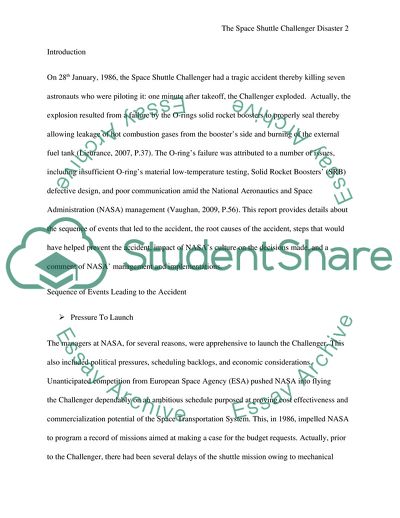Cite this document
(The Space Shuttle Challenger Disaster Case Study Example | Topics and Well Written Essays - 2000 words, n.d.)
The Space Shuttle Challenger Disaster Case Study Example | Topics and Well Written Essays - 2000 words. https://studentshare.org/engineering-and-construction/1878923-the-space-shuttle-challenger-disaster
The Space Shuttle Challenger Disaster Case Study Example | Topics and Well Written Essays - 2000 words. https://studentshare.org/engineering-and-construction/1878923-the-space-shuttle-challenger-disaster
(The Space Shuttle Challenger Disaster Case Study Example | Topics and Well Written Essays - 2000 Words)
The Space Shuttle Challenger Disaster Case Study Example | Topics and Well Written Essays - 2000 Words. https://studentshare.org/engineering-and-construction/1878923-the-space-shuttle-challenger-disaster.
The Space Shuttle Challenger Disaster Case Study Example | Topics and Well Written Essays - 2000 Words. https://studentshare.org/engineering-and-construction/1878923-the-space-shuttle-challenger-disaster.
“The Space Shuttle Challenger Disaster Case Study Example | Topics and Well Written Essays - 2000 Words”. https://studentshare.org/engineering-and-construction/1878923-the-space-shuttle-challenger-disaster.


